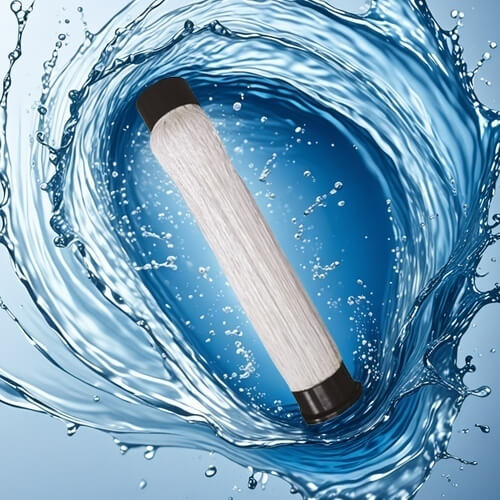What are the treatment methods for aquaculture tailwater?
Aquaculture tailwater refers to the water body containing pollutants such as leftover bait, feces, and drug residues discharged from aquaculture ponds, cages, etc. during the aquaculture process. It is very necessary to treat aquaculture tailwater, which helps to protect the environment, maintain ecological balance, and ensure the sustainable development of aquaculture.
I. Main goals of treatment
Remove suspended solids: including organic solid particles such as leftover bait and feces, and reduce the turbidity of water bodies.
Reduce nutrient salt content: such as reducing the concentration of nutrients such as nitrogen and phosphorus to prevent eutrophication of water bodies. Because excessive nitrogen and phosphorus can cause algae to multiply in large numbers, water blooms and other phenomena, destroying the ecological environment of water bodies.
Reducing harmful substances: remove drug residues, heavy metals and other substances harmful to aquatic organisms and the environment used in the aquaculture process.
II. Treatment methods
(I) Physical treatment method
Sedimentation method
Principle: Use gravity to allow suspended solid particles in the water to naturally settle to the bottom of the water. Generally, a sedimentation tank is set up at the outlet of the breeding pond. When the tail water stays in the sedimentation tank for a period of time, larger particles of impurities will settle down. For example, in some small freshwater fish breeding ponds, the tail water is introduced into a simple sedimentation tank through a pipe. After staying for 2-3 hours, the silt and larger residual bait particles can be effectively precipitated.
Advantages: simple operation, low cost, and can quickly remove larger particles of suspended matter.
Disadvantages: limited removal effect for some tiny suspended particles and dissolved pollutants.

Filtration method
Principle: Filter the tail water through filter materials (such as quartz sand, activated carbon, filter screen, etc.) to intercept solid suspended matter. For example, in some factory-based aquaculture systems, multi-layer filter screens and sand filter devices are used. The tail water passes through filter screens and sand layers of different apertures in turn, which can effectively remove small particles of impurities in the water.
Advantages: It can effectively remove tiny suspended particles and improve the clarity of water quality.
Disadvantages: The filter material needs to be cleaned or replaced regularly, otherwise it will be blocked, affecting the filtering effect; and the equipment and operating costs are relatively high.
(II) Chemical treatment methods
Flocculation and sedimentation method
Principle: Add flocculants (such as polyaluminium chloride, polyacrylamide, etc.) to the tail water to make the suspended particles and colloidal substances in the water condense into larger flocs, and then remove them by sedimentation or filtration. For example, in the treatment of shrimp farming tail water, after adding an appropriate amount of flocculants, the originally dispersed organic matter and fine particles will form larger flocculent precipitation, which greatly accelerates the water purification speed.
Advantages: It has a significant effect on removing tiny particles and colloidal substances.
Disadvantages: The amount of flocculants used needs to be strictly controlled. Excessive use may cause poisoning to aquatic organisms and increase treatment costs.
Disinfection method
Principle: Use disinfectants (such as chlorine dioxide, bleaching powder, ozone, etc.) to kill pathogens in tail water and reduce the risk of disease transmission. For example, in the treatment of ornamental fish farming tail water, using an appropriate amount of chlorine dioxide to disinfect the tail water can effectively kill harmful microorganisms such as bacteria, viruses and parasites.
Advantages: It can effectively control pathogens in tail water and prevent disease transmission.
Disadvantages: If the disinfectant remains, it will have adverse effects on aquatic organisms and the environment, and some disinfectants (such as ozone) have high production costs and equipment requirements.
(III) Biological treatment methods
Aquatic plant purification method
Principle: Use aquatic plants (such as reeds, calamus, water hyacinth, etc.) to absorb nutrients (nitrogen, phosphorus, etc.) and some harmful substances in the tail water. For example, in the model of combining wetland ecosystems with aquaculture, the tail water of aquaculture is discharged into artificial wetlands, and aquatic plants such as reeds absorb ammonia nitrogen and phosphorus in the water through their roots. At the same time, their rhizosphere microorganisms can also decompose some organic pollutants.
Advantages: Eco-friendly, low cost, and can provide habitats for aquatic organisms.
Disadvantages: The treatment cycle is relatively long, and sufficient space is required to grow aquatic plants; and if some aquatic plants are not managed properly, they may over-reproduce and cause ecological problems (such as water hyacinth infestation).
Microbial treatment method
Principle: Decompose organic matter in tail water through the metabolism of microorganisms (such as bacteria, fungi, etc.). For example, in the process of treating aquaculture tailwater in a biofilter, the microbial flora attached to the filter material can decompose organic pollutants into carbon dioxide, water and simple inorganic substances.
Advantages: Good decomposition effect on organic matter, can effectively reduce the chemical oxygen demand (COD) of water bodies.
Disadvantages: The growth and metabolism of microorganisms require suitable environmental conditions (such as temperature, pH value, etc.), and the establishment and stabilization of microbial communities requires a certain amount of time.
